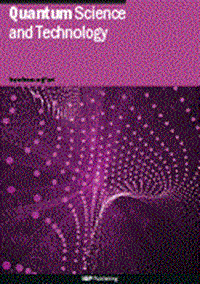重复交互协议的平衡和非平衡稳态:弛豫动力学和能量成本
IF 5
2区 物理与天体物理
Q1 PHYSICS, MULTIDISCIPLINARY
引用次数: 0
摘要
我们通过重复相互作用方案研究了量子比特系统与热化浴-辅助自旋相互作用的动力学。考虑系统的一般初始条件,并采用系统与安切拉之间的海森堡型相互作用,我们分析证明了以下内容:(i)量子比特系统的居群和相干独立地向非平衡稳态解演化,该解在量子比特的能量特征基中是对角的。种群几何上松弛到这种状态,而相干则通过更复合的行为衰减。(ii)在长时间限制下,系统接近稳定状态,通常不同于辅助装置的热状态。我们推导了这种稳态解,并证明了它与相互作用参数和碰撞频率的关系。(iii)我们限定了在特定容错范围内达到稳态所需的交互步骤数,并评估了与该过程相关的能量成本。我们的主要发现是,确定性的系统辅助相互作用通常不会导致系统热化到辅助的热状态。相反,它们产生了一个独特的非平衡稳态,我们可以明确地推导出来。然而,我们也确定了一个操作制度,导致热化与一些长时间和可能随机的碰撞。本文章由计算机程序翻译,如有差异,请以英文原文为准。
Equilibrium and nonequilibrium steady states with the repeated interaction protocol: relaxation dynamics and energetic cost
We study the dynamics of a qubit system interacting with thermalized bath-ancilla spins via a repeated interaction scheme. Considering generic initial conditions for the system and employing a Heisenberg-type interaction between the system and the ancillas, we analytically prove the following: (i) the populations and coherences of the qubit system evolve independently toward a nonequilibrium steady-state solution, which is diagonal in the qubit’s energy eigenbasis. The population relaxes to this state geometrically, whereas the coherences decay through a more compound behavior. (ii) In the long time limit, the system approaches a steady state that generally differs from the thermal state of the ancilla. We derive this steady-state solution and show its dependence on the interaction parameters and collision frequency. (iii) We bound the number of interaction steps required to achieve the steady state within a specified error tolerance, and we evaluate the energetic cost associated with the process. Our key finding is that deterministic system-ancilla interactions do not typically result in the system thermalizing to the thermal state of the ancilla. Instead, they generate a distinct nonequilibrium steady state, which we explicitly derive. However, we also identify an operational regime that leads to thermalization with a few long and possibly randomized collisions.
求助全文
通过发布文献求助,成功后即可免费获取论文全文。
去求助
来源期刊

Quantum Science and Technology
Materials Science-Materials Science (miscellaneous)
CiteScore
11.20
自引率
3.00%
发文量
133
期刊介绍:
Driven by advances in technology and experimental capability, the last decade has seen the emergence of quantum technology: a new praxis for controlling the quantum world. It is now possible to engineer complex, multi-component systems that merge the once distinct fields of quantum optics and condensed matter physics.
Quantum Science and Technology is a new multidisciplinary, electronic-only journal, devoted to publishing research of the highest quality and impact covering theoretical and experimental advances in the fundamental science and application of all quantum-enabled technologies.
 求助内容:
求助内容: 应助结果提醒方式:
应助结果提醒方式:


